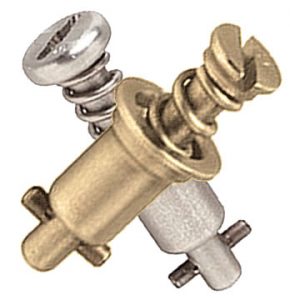 Fasteners come in many different styles. Some of them are simple, whereas others are more complex. Traditional bolts, for instance, feature a simple style consisting of a threaded shank and an expanded head. There are also quarter-turn fasteners, however. Quarter-turn fasteners feature a more complex style that allows for a 90-degree rotation during installation.
Fasteners come in many different styles. Some of them are simple, whereas others are more complex. Traditional bolts, for instance, feature a simple style consisting of a threaded shank and an expanded head. There are also quarter-turn fasteners, however. Quarter-turn fasteners feature a more complex style that allows for a 90-degree rotation during installation.
What Are Quarter-Turn Fasteners?
Quarter-turn fasteners are commonly used in the aerospace industry. They live up to their namesake by requiring a 90-degree or quarter-turn rotation during installation. Quarter-turn fasteners still have a head, but they don’t have the same threaded shank as other fasteners like bolts. Instead, they feature a smooth body that’s affixed with an enclosed cam lock.
Contrary to popular belief, quarter-turn fasteners aren’t new. They’ve been around for nearly a century. Quarter-turn fasteners were invented by William Dzus in the 1930s. Since then, different types of quarter-turn fasteners have been released, but they all use the same 90-degree turn for installation.
How Quarter-Turn Fasteners Work
Also known as turnlock fasteners, quarter-turn fasteners work by engaging a cross pin. You can install them using a screwdriver or similar tool with the appropriate bit. As you turn the head with a tool, the cross pin will rise up the enclosed cam. This movement will result in a loading action. Once you’ve turned the head a complete 90 degrees, the cross pin will fall into the detent.
Quarter-turn fasteners contain a spring. The spring is responsible for applying force to the cross pin. Normally, the cross pin is completely concealed and enclosed within the quarter-turn fastener’s body. Turning the head with a tool, though, will engage the spring while subsequently pushing the cross pin into the detent. And once the cross pin has fallen into the detent, the quarte-turn fastener will essentially be locked in place.
Benefits of quarter-turn fasteners include the following:
- Supports installation and removal with screwdrivers or other common tools
- Resistant to loosening when exposed to vibrations
- Very strong locking feature
- Eliminates the need for rivetting
- Fast operating
- Available in a variety of materials and sizes
In Conclusion
In the aerospace industry, quarter-turn fasteners are often preferred over other types of fasteners. Airplanes produce strong vibrations. While vibrations can cause some types of fasteners to loosen, quarter-turn fasteners are resistant to such loosening. They feature a cross pin that will fall into the detent when the head is turned 90 degrees.



